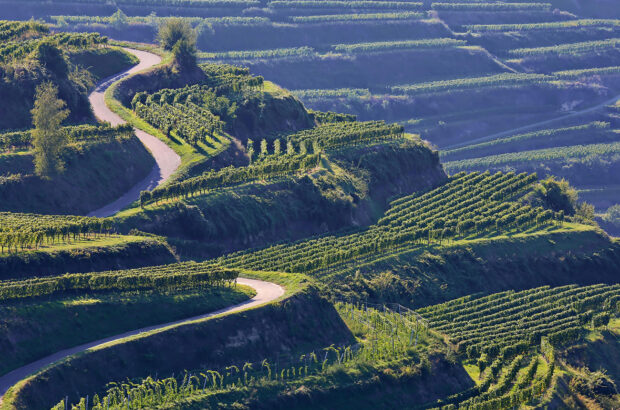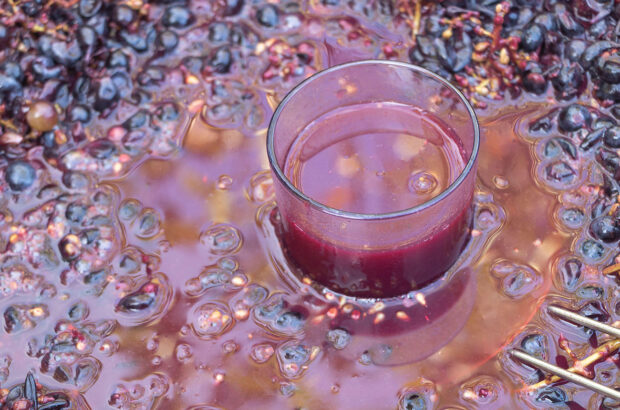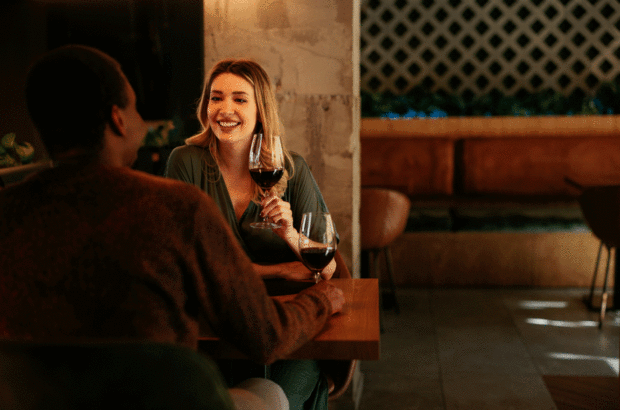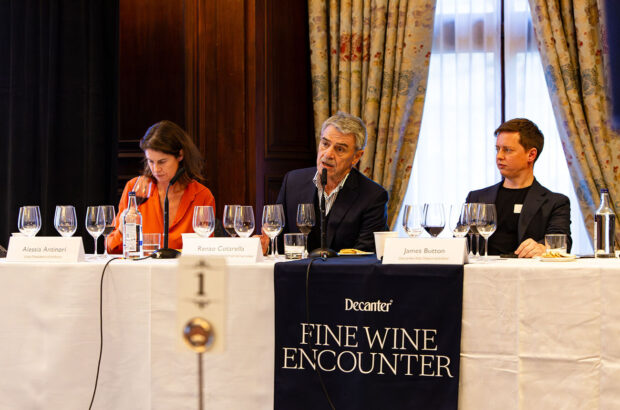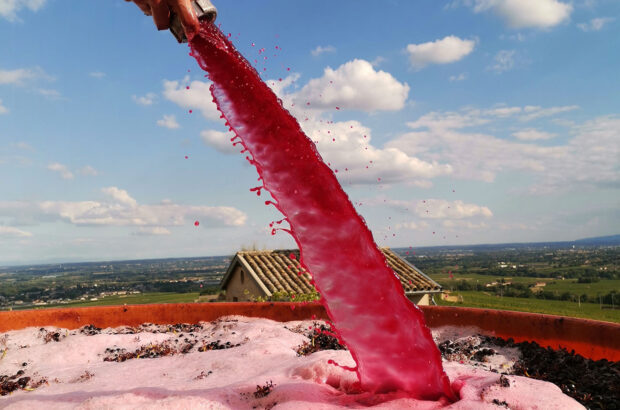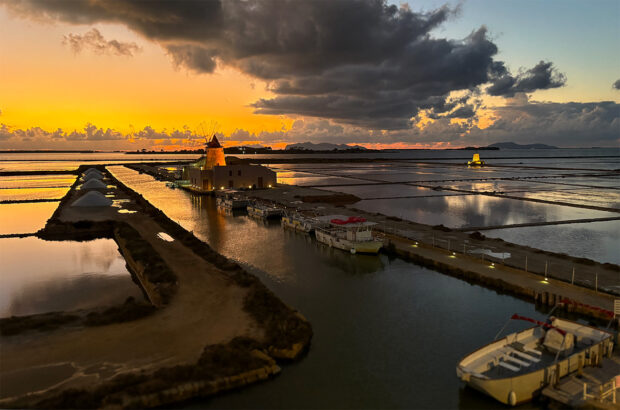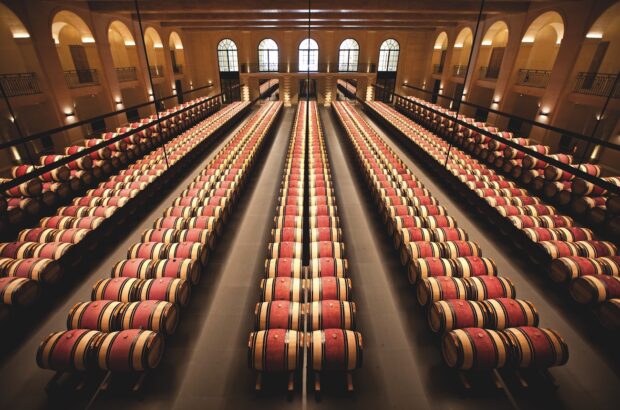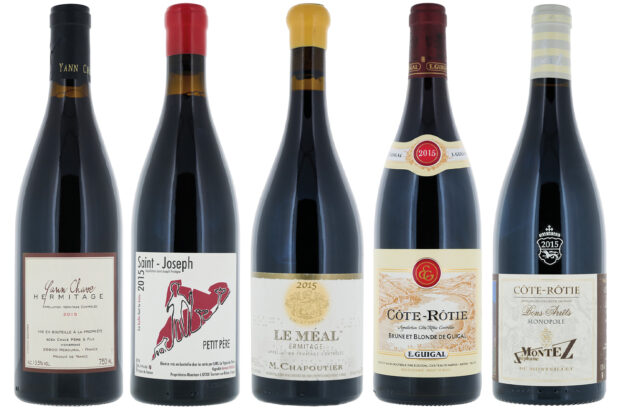Inzuzo: The bigger picture
Julie Sheppard
As reported in the April issue, South Africa is a hotbed of exciting young winemaking talent. So I jumped at the chance to meet Kaylin Willscott, assistant winemaker at Journey’s End in Stellenbosch, during her first visit to London.
She was in town to talk about the Inzuzo Wine Co, a community-focused company owned by the workers at Journey’s End. Profits are used to support projects in the nearby village of Sir Lowry’s Pass, where many team members and their families have lived for generations; inzuzo means ‘benefit’ or ‘reward’ in Zulu and Xhosa.
The goal is to build and run an early childhood development centre to plug a gap in state funding for early-years education. ‘It is a dream project for me to combine winemaking with outreach,’ says Willscott. Her Inzuzo range includes a selection of Transformative varietal wines (due in the UK this September) and four blends. I loved the pomegranate-fruited Big Picture Red 2024 (£14.95 Cellar Door Wines) and Chenin-led Big Picture White 2024, already in UK restaurants. But stars of the show were the Signature SLPVs – a vibrant Sauvignon Semillon and perfumed Cinsault-Grenache. ‘The range is a collage of experiences from my life,’ Willscott says. ‘It ends up being the big picture.’
Bubbles at Berlucchi
Amy Wislocki
In 1961, Guido Berlucchi and Franco Ziliani made the first ever Franciacorta – a single example remains from 3,000 bottles produced. Today, the Berlucchi estate is the largest producer of this traditional-method (metodo classico) sparkling wine, managed by Ziliani’s children Arturo, Cristina and Paolo (Berlucchi’s wife died young and they had no children).
At the family’s 16th-century stately home, I met Arturo and Cristina, and the winemaker Ferdinando Dell’Aquila. They poured for me two wines from the ‘terrible’ 2017 vintage, the ’61 Nature (£40.99 £46.75 All About Wine, Fintry Wines, Shelved Wine, Simply Wine, Vinvm) and the ’61 Nature Rosé. ‘It was the worst spring frost in 70 years,’ recalls Arturo. Both wines were fresh and fruit-forward, and zero dosage. ‘We’ve reduced dosage across the board, for a purer expression of the varieties. It’s milder here than in Champagne, so the acidity is less marked and the wines have a natural equilibrium.’
The highlight, though, was the 2013 Palazzo Lana Extrême Extra Brut (£75.99-£99 All About Wine, Corking Wines, Hedonism, Strictly Wine, The Fine Wine Co) the flagship, 100% Pinot Noir, aged on lees for 10 years. It’s drinking beautifully, with yellow plum and lemon confit notes, and a hint of salinity. Elegant but concentrated and in perfect balance.
Numanthia: Consistency and refreshing evolution
Ines Salpico
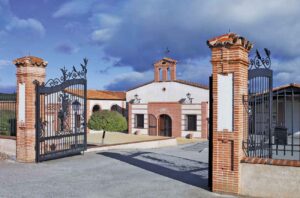
Leading producers often present new alongside previous releases – a way to contextualise the incoming vintages, reassert stylistic and qualitative continuity, and underline ageing potential. However, during the recent presentation of Numanthia’s newly released Numanthia 2019 (£46.67 Millésima) and Termanthia 2016 (£230 Millésima), estate director Julio Rodriguez brought with him a prospective comparison: a barrel sample of the Toro winery’s eponymous label from the embryonic 2023. It was a truly interesting surprise that prompted a wider discussion about the potential of DO Toro’s incredible old-vine heritage and the estate’s unfolding evolution and departure from a Robert Parker-informed style to a greater focus on terroir.
The sample, aged for 13 months in oak, exuded vibrancy, expressiveness and lovely definition of aroma and flavour. Balsamic freshness and smoky restraint underpinned the red and blue fruit, and lined a superb tannic structure – a surprising and fresh take on Toro’s trademark kaleidoscopic power and a sign of great things to come.
Gimblett Gravels Annual Vintage Selection 2022
Tina Gellie
For the past 15 years, Andrew Caillard MW has chosen 12 reds from those entered by the 22 member producers of New Zealand’s Gimblett Gravels wine-growing district that best represent each vintage and chart the evolution of this Hawke’s Bay enclave. From his blind tasting of the new-release 2022s, Caillard – whose magnum opus The Australian Ark recently won Best Drink Book at the 2025 André Simon Awards – selected a 100% Merlot, six Bordeaux varietal-led blends, four 100% Syrahs and a Syrah-led blend.
The vintage was challenging, with record heavy rains and warm, humid conditions a month before the early harvest. But Caillard’s dozen, united in their elegance and stony freshness, are testament to the winemakers’ hard work. Stonecroft’s 100% Syrahs, Serine and Reserve, were my standouts – amazing aromatic lift and fruit intensity – while the Reserve Merlots from Mission Estate (100%) and Mills Reef (a very precise 98.69%) both offer appealing crunchiness.
The others are: Villa Maria’s Cellar Selection Merlot-Cabernet Sauvignon, Esk Valley’s Artisanal Malbec-Cabernet Sauvignon Merlot, Trinity Hill’s The Gimblett, Squawking Magpie’s The Nest, Church Road’s 1 Malbec, Smith & Sheth’s Cru Heretaunga Syrah, Craggy Range’s Le Sol and Church Road’s Tom Syrah. None are available in the UK, but many previous vintages can be found.
Thirty-year Essencia vertical
Sylvia Wu
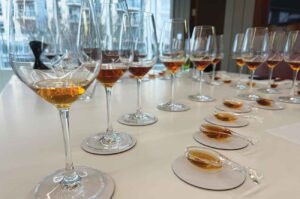
Essencia – the rare, syrupy nectar from Tokaj in Hungary – is made with free-run juice from shrivelled Aszú berries, reaching an astonishing 500+ grams per litre of sugar (Sauternes is under 220g/L), naturally fermented to just a trickle of alcohol while maintaining freshness. The lifespan of such a liquid – made by Royal Tokaji and served in restaurants in crystal spoons – is close to infinite, as illustrated by the producer’s vertical tasting of its full release, spanning the inaugural 1993 vintage to the latest, the 2017, to be released later this year, which was generous and bright, with citrus and apricot purée.
The 2007 (£480-£511/37.5cl ib Bordeaux Index, Cru, Morgan Classic) showed bruised apple, marmalade and camomile. The 2003 (£360-£435/37.5cl ib Cru, Morgan Classic) offered more coffee, figs and hazelnuts, while the 1999 – my favourite – boasted a bouquet of dark fruits, chocolate orange, toffee and leather, held together by an everlasting finish.



